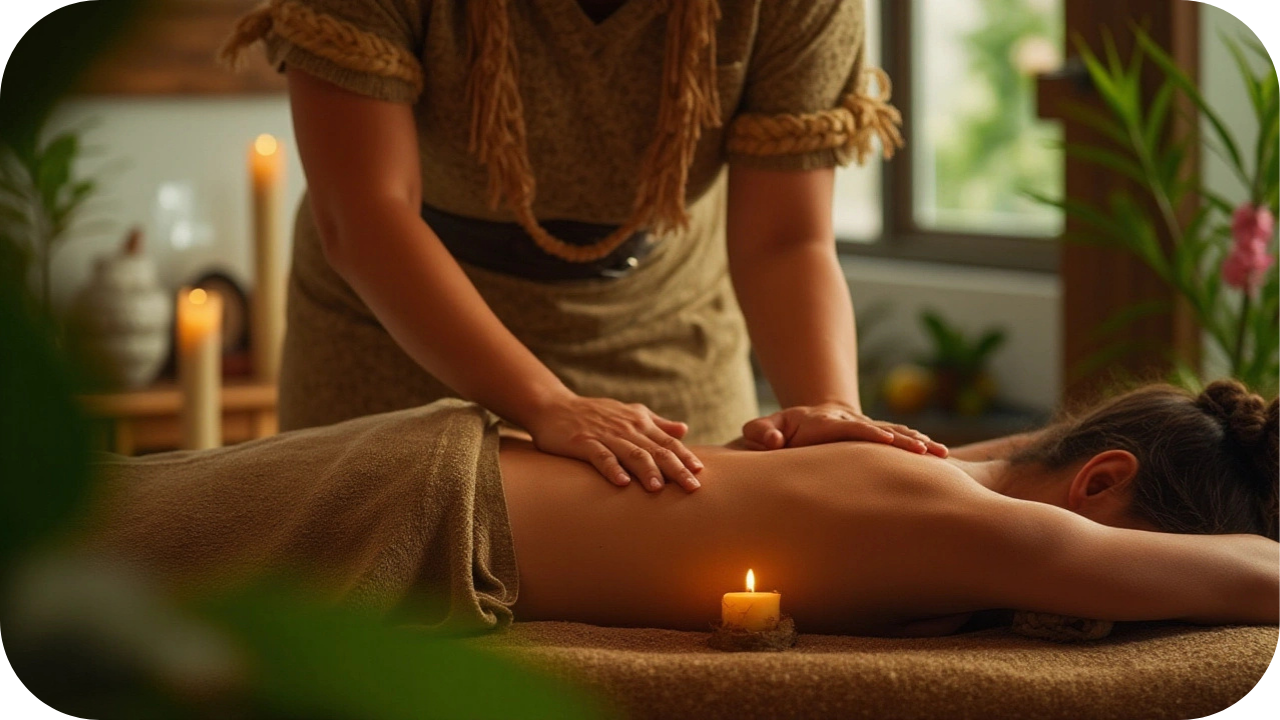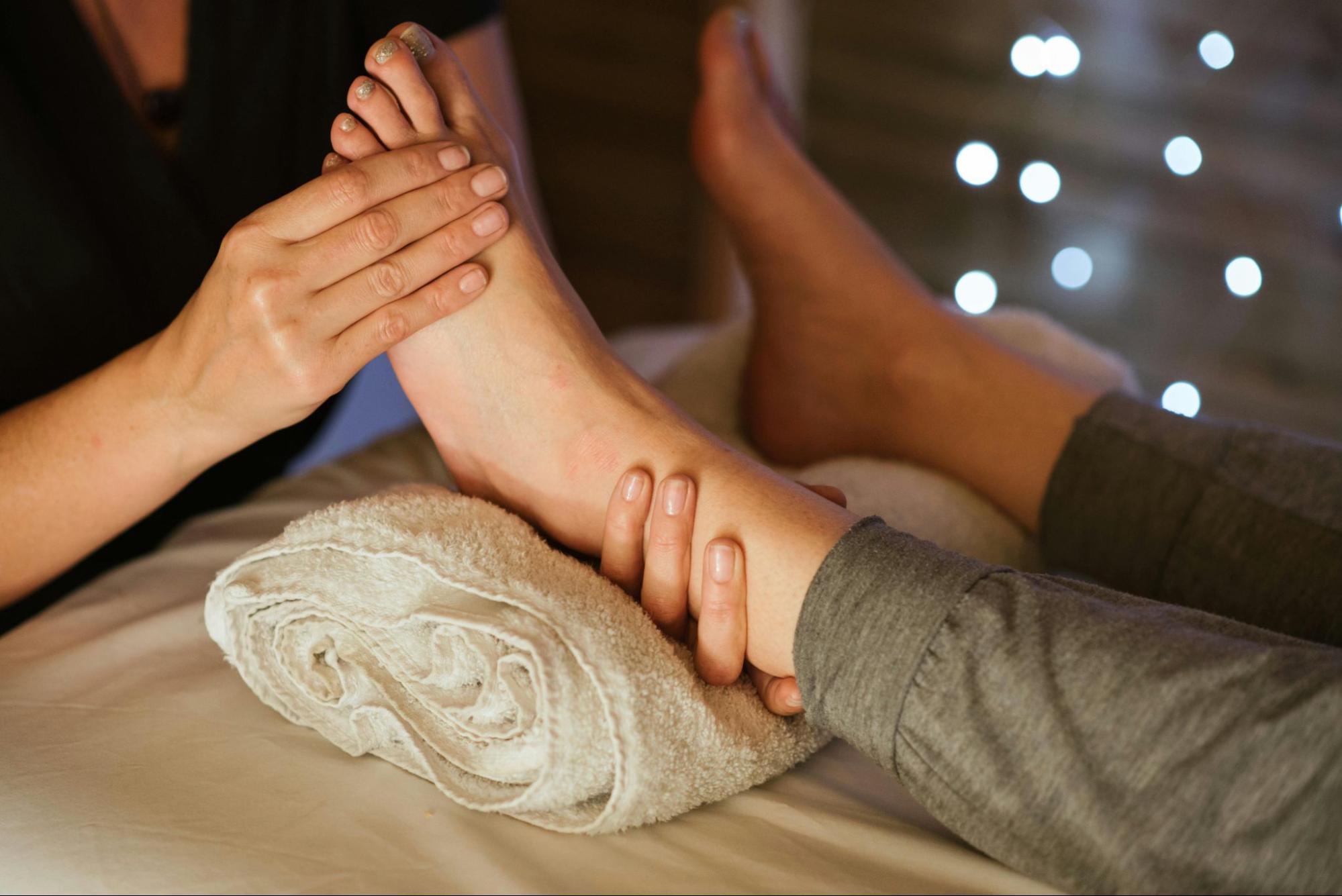
What Is The Difference Between Lomi Lomi And Regular Massage?
Are you unsure whether to choose a Lomi Lomi massage or a regular massage for your next relaxation session? Both options offer unique benefits, but the experiences they provide are quite distinct.
Regular massages, like Swedish or deep tissue, are typically focused on relieving muscle tension and promoting physical relaxation. In contrast, Lomi Lomi massage is rooted in ancient Hawaiian traditions, emphasizing a holistic approach that nurtures the body, mind, and spirit.
Let’s break down the key differences to help you make the right choice for your next massage experience.
What Is The Difference Between Lomi Lomi And Regular Massage?
Lomi Lomi massage transcends the conventional focus of regular massages. While traditional options such as Swedish or deep tissue techniques address physical tension through targeted strokes and pressure, Lomi Lomi integrates physical relaxation with spiritual and emotional healing. Its long, continuous, wave-like movements aim to harmonize energy, release emotions, and foster a profound sense of inner balance. This makes it a truly transformative experience, beyond simple muscle relief.
Key Differences Between Lomi Lomi and Regular Massage
Lomi Lomi and regular massage differ in technique, focus, and overall experience, each offering distinct benefits for body and mind. Let’s look at the key differences.
1. Technique and Movement Style
Lomi Lomi’s defining feature is its fluid and continuous movement. The massage therapist uses their forearms, elbows, and hands to perform long, sweeping strokes that mimic the gentle waves of the ocean.
These movements flow seamlessly across the body, providing a calming rhythm that helps release physical and emotional tension. The emphasis is on relaxation rather than focusing on specific muscle groups.
In contrast, regular massages like Swedish or deep tissue employ a variety of techniques such as kneading, tapping, and friction.
These methods tend to focus on targeting particular muscle groups or problem areas, offering a more structured and often therapeutic approach to muscle tension and soreness. While the movements can still be relaxing, the therapist’s goal is often to focus directly on physical pain relief.
2. Focus and Intent
Lomi goes beyond physical relaxation—it’s a holistic practice aimed at nurturing both body and spirit. It’s deeply intertwined with Hawaiian traditions, where the therapist acts as a healer, working not just on your muscles but on your energy, helping to remove blockages and restore balance.
The intention is to create a deep connection between the therapist and client, helping to promote emotional healing and spiritual well-being.
Regular massage, on the other hand, primarily targets the physical aspects of health. It’s about relieving muscle tension, improving flexibility, and reducing stress.
While it can certainly offer a sense of relaxation and well-being, it doesn’t have the same spiritual or emotional focus that Lomi Lomi is known for. Instead, it’s more about providing targeted relief for physical discomfort.
3. Pressure and Intensity
In Lomi Lomi, the pressure is usually gentle and fluid, varying from light to firm but never focused on pinpointing specific muscle knots. The goal is to encourage relaxation and energy flow throughout the body, not necessarily to break up muscle tension in isolated areas.
Regular massages, especially deep tissue massage, can involve strong, focused pressure on specific muscle groups.
Therapists may use their hands, thumbs, or elbows to work deeply into the muscles, often targeting areas of tightness or chronic pain. While Lomi Lomi is more about creating a relaxing environment, regular massages can provide more immediate relief from physical discomfort.
4. Duration and Pace
Lomi Lomi tends to have a slower pace with its long, flowing strokes. These movements are designed to create a sense of fluidity and calm, helping the body and mind to enter a deep state of relaxation. The pace is often deliberate, allowing the therapist to move across the body without interruption.
Regular massages can vary in pace depending on the type. For instance, Swedish massage typically involves moderate-paced strokes, while deep tissue massage may be slower as the therapist applies firm pressure.
However, the pace is often more structured than the free-flowing nature of Lomi Lomi, as the focus is more on relieving muscle tension and discomfort.
5. Role of the Practitioner
In Lomi Lomi, the therapist is not just a technician; they are seen as a healer. This means they bring an emotional and spiritual connection to the session, often incorporating chants or intentions to guide the healing process. The therapist’s role is to facilitate not only physical relaxation but also emotional release and balance.
Regular massage therapists, however, are typically more focused on the physical aspects of the massage. While they can offer a comforting and relaxing experience, their role is primarily to manipulate muscles and tissues to address physical issues like soreness or tension, with less emphasis on the emotional or spiritual dimensions.
6. Environment and Atmosphere
Lomi Lomi sessions are usually performed in peaceful, tranquil environments that reflect the Hawaiian healing traditions. The atmosphere is often designed to foster a deep sense of calm, with soft lighting, soothing music, and natural elements that enhance the experience.
The setting is integral to the overall therapeutic journey, creating an ambience that promotes emotional and spiritual healing.
Regular massage environments vary but tend to be either spa-like or clinical, depending on the setting. While the atmosphere may still be relaxing, it often lacks the deeply spiritual or ritualistic elements associated with Lomi Lomi. Regular massage settings focus more on comfort and physical relaxation.
7. Breathing and Body Connection
Practitioners in Lomi Lomi often encourage clients to breathe deeply and in sync with the therapist’s movements. Breathing becomes a vital part of the healing process, helping to release tension and align the body’s energy. This connection between breath and movement creates a deeper sense of mind-body unity.
In regular massage, while deep breathing is sometimes encouraged to help with relaxation, it’s typically not a central focus. The primary goal is to relax the muscles and reduce physical tension, with less emphasis on synchronising breath and body movements.
8. Emotional and Spiritual Healing
Lomi Lomi is spiritually focused, often viewed as a healing ritual designed to align the body, mind, and spirit. The practice may involve emotional release, allowing clients to feel a deep sense of relief or emotional clarity during or after the session.
The aim is to create a holistic healing experience that nurtures emotional well-being and supports spiritual growth.
Regular massages, however, are more focused on physical relief. While they can reduce stress and promote relaxation, they don’t typically address emotional blockages or spiritual healing in the same way.
The purpose is to release muscle tension, improve circulation, and alleviate physical discomfort rather than promote spiritual well-being.
Benefits of Lomi Lomi Massage
Lomi Lomi massage isn’t just a treatment—it’s a journey that nurtures your body, mind, and spirit. Here’s why it stands out:
- Improved Circulation: The fluid, long strokes enhance blood flow, helping to oxygenate tissues and promote healing.
- Relieves Muscle Tension: Gentle yet firm pressure helps to loosen tight muscles and reduce soreness.
- Stress Reduction: The calming rhythm encourages deep relaxation, easing mental and physical stress.
- Emotional Release: Aids in releasing pent-up emotions, promoting emotional clarity and well-being.
- Holistic Healing: Works on both physical relaxation and energy balance, leaving you feeling rejuvenated and centred.
- Boosted Immunity: By improving circulation and lymphatic flow, Lomi Lomi massage helps the body eliminate toxins, which strengthens the immune system.
- Enhanced Flexibility: The fluid movements and stretching techniques help loosen joints and improve range of motion.
- Skin Health: The use of nourishing oils during the massage hydrates the skin, leaving it soft and glowing.
- Detoxification: Encourages the release of toxins stored in tissues, contributing to overall detoxification of the body.
- Posture Improvement: Releases deep-seated tension, helping to align the body and improve posture over time.
Benefits of Regular Massage
Regular massages, such as Swedish and deep tissue, are more than just a treat—they’re a powerful tool for physical recovery and relaxation. Here’s what they offer:
- Muscle Pain Relief: Targets areas of discomfort, easing tight muscles and reducing soreness.
- Improved Flexibility: Helps loosen muscles and joints, increasing range of motion.
- Stress Reduction: Swedish massage promotes relaxation, lowering stress levels and calming the mind.
- Better Circulation: Encourages blood flow, which supports muscle healing and overall health.
- Chronic Tension Relief: Deep tissue massage focuses on breaking up muscle knots and tension, aiding recovery from injury or stiffness.
Lomi Lomi Massage vs. Regular Massage: What to Expect
A Lomi Lomi massage session begins with a consultation, followed by creating a tranquil environment with soft lighting, soothing music, and essential oils. The experience is defined by long, flowing strokes that mimic ocean waves, with therapists using their hands, forearms, and elbows to deliver continuous, fluid motions.
This holistic approach promotes relaxation, emotional release, and energy balance. Many clients report profound mental clarity and emotional lightness alongside physical relaxation after the session.
In contrast, a regular massage session focuses on specific areas of physical tension and stress relief. After a brief discussion of your needs, Swedish massage offers gentle, rhythmic strokes for relaxation, while deep tissue massage applies firmer pressure to target deeper muscle layers.
Some discomfort may occur during deep tissue work, but this is often followed by noticeable relief. Post-session effects typically include muscle relaxation and stress reduction, with mild soreness possible after deeper treatments.
Which One Should You Choose?
The choice between Lomi Lomi and regular massage depends on your goals. If you’re looking for emotional healing, spiritual balance, and a deeper relaxation experience, Lomi Lomi is the ideal choice. It’s especially beneficial for those seeking a holistic approach to well-being.
If your primary concern is muscle tension, pain relief, or stress reduction, a regular massage may suit your needs better. For targeted relief from physical discomfort, Swedish or deep tissue massages offer effective solutions.
Conclusion
Whether you opt for the fluid, soul-nurturing experience of Lomi Lomi or the more targeted, therapeutic approach of regular massage, both types offer their unique benefits. Consider your personal needs and goals when choosing, and remember that both massage types can provide much-needed relief and relaxation.
To experience the healing touch of Lomi Lomi, book your session with us today and let the healing begin.


